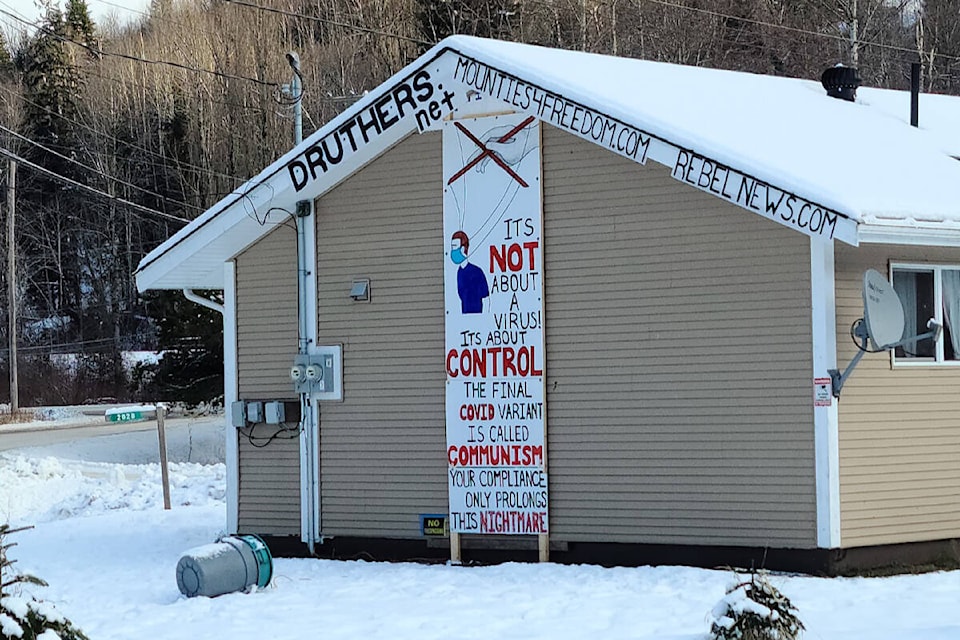Vaccinations against COVID-19 have all but stalled out, show weekly statistics released by Northern Health covering 40 areas within northern B.C.
Just four of those 40 locations showed an increase in people over the age of 12 getting their first dose for the week ending Dec. 14, a trend that has been growing since late fall.
And in each of those four locations, all in the northeast where vaccination rates are among the lowest in the north and with northern rates below those elsewhere in the province, the increase was just one per cent.
There are scatterings of second dose increases, a natural follow on from those who have received first doses, and the weekly releases are now starting to show third dose numbers.
In B.C., 88.7 per cent of people aged 12 and up have received two doses of COVID-19 vaccine, compared to 78 per cent in Northern Heath as of Dec. 16.
Northern Health’s chief medical officer for the northwest, Dr. Raina Fumerton, says it’s hard to pin down the reasons why vaccinations have ground to a halt in the north or even why the northern rate, as an average of the population, lags behind the rest of the province.
“It’s been a challenge,” said Fumerton last week. “We have gotten to a much better place than where we were just a couple of months ago.”
Proof of vaccination requirements for restaurants, bars, recreation and entertainment have nudged initially-resistant people to get their does as have federal vaccination requirements to get on an airplane.
“And we’ve worked hard to remove as many barriers to access as we can,” said Fumerton.
“But we know there is a certain percentage [of the population] that won’t get vaccinated.”
“We still run across people who are hesitant and we’re doing everything we can, bending over backwards,” Fumerton added.
Misinformation spread widely over social media channels is not helping and health officials spend time correcting what people are reading or watching.
Health officials will also spend time explaining the nature of each vaccine option, all but tailoring what will be offered to the vaccine hesitant.
Specific to the north, Fumerton said there could very well be an anti-government attitude at work, something rooted in the desire to be independent of authority.
“Some people just don’t like being told what to do,” she said.
But she’s at a loss to explain why rates within northern urban areas are higher than northern rural areas.
In what’s called the ‘Smithers Town Centre’, the second dose rate is 82 per cent, 10 percentage points higher than ‘Smithers Rural’, a circumstance repeated in �������� Lake when compared to both north and south of the village.
‘Terrace City Centre’ comes in at 85 per cent having a second dose but in ‘Terrace Rural’, the rate is 79 per cent.
Second dose rates in the northeast are generally lower than elsewhere in the north — 63 per cent in Chetwynd, 56 per cent in north of Peace River and 73 per cent in Dawson Creek.
“It’s just difficult to know,” said Fumerton of the disparity between elsewhere in the north. “It’s difficult to know what we don’t know. We could try surveys but I doubt that the people who don’t what vaccines would be the people who would fill them out.”
Some anti-vaccination groupings can be traced back to religious groups who have a mistrust of public health in any event, Fumerton continued.
“These people do look to faith leaders for advice,” she said.
Still, Fumerton said the COVID-19 vaccination rate among those eligible has outpaced other public health vaccination campaigns.
“Definitely higher, it’s been pretty spectacular,” she said.
This is the last week for vaccination clinics within the north with most clinics in most areas opening again the first week of January.
COVID vaccination rates aside, Fumerton did urge that people take advantage of flu shots, noting that they are free and available at pharmacies as well as public health units.
READ MORE:



